¶ Theoretical Knowledge
¶ Traffic circuit
It is important to be familiar with the notion of traffic circuit.
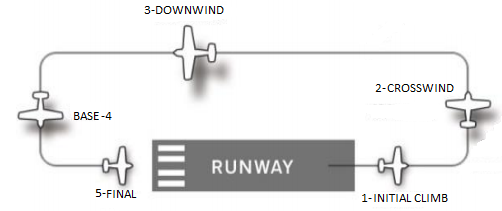
¶ Weather condition
Remember that, while flying the pattern, the pilot shall maintain visual with the runway all the time.
As we fly VFR, visual meteorological conditions corresponding to the flown airspace must be observed.
¶ Practical Flight
¶ Foreword
On this page, we focus on flying the circuit.
For proper instructions on how operating your aircraft, we encourage you reading the practical flight techniques part of the beginner level.
Typical traffic circuit is performed at 1,000 feet above ground level (AGL) and if possible defined as left-hand circuit to help the pilot with runway visibility.
We take these two parameters as references for our practical study.
Sometimes on VFR charts, other restrictions may apply: right hand circuit, other altitude, and/or nonstandard legs: all the time consult the charts in order to comply with the published circuit.
¶ Initial climb
After takeoff, maintain runway track.
Pay attention to the drift caused by a possible crosswind.
Try to remain over the runway as much as possible.
¶ Crosswind leg
When passing 500 feet AGL, but not before the end of the runway, make a 90° left turn toward crosswind leg.
Continue climbing up to 1,000 feet AGL. Upon reaching this height, you are ready to turn to downwind leg.
We suggest that you maintain an airspeed of 1.45 times stall speed.
In Cessna 172, it will give you roughly 80 knots indicated airspeed.
¶ Downwind leg
At 1,000 feet AGL, make a 90° left turn toward downwind leg.
The airfield should be in your 11 o'clock.
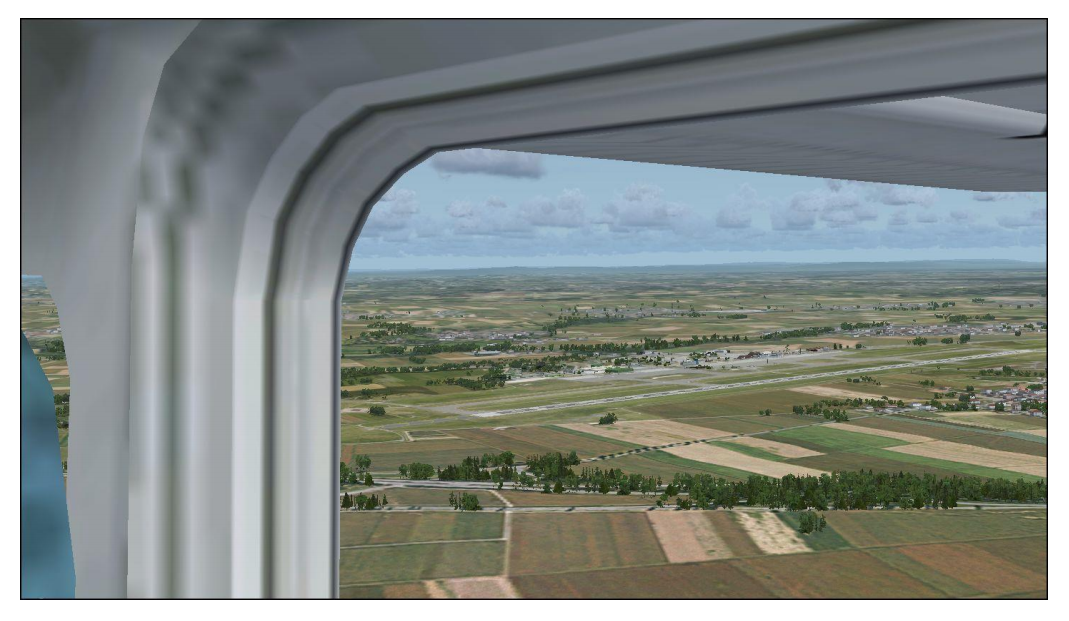
As you fly downwind, try to maintain constant speed, height and distance to runway.
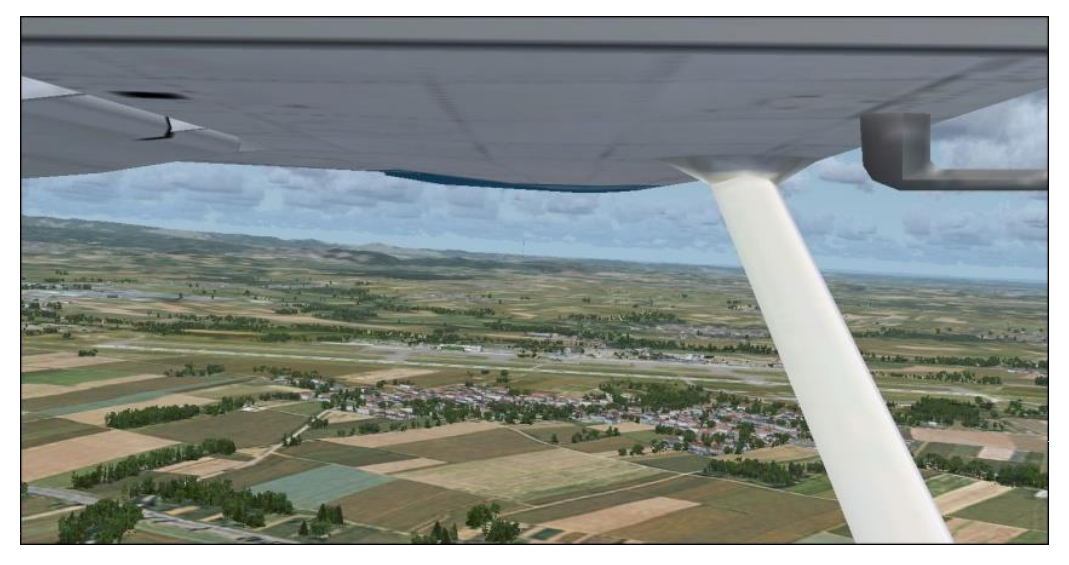
When you pass abeam runway threshold, start timer for one minute.
Take care of the effect of the wind.
Usually, add or subtract 1 second per headwind knot.
¶ Base leg
When the time is up, make a 90° left turn toward base leg.
Visually, you should see the runway at your 7 to 8 o'clock when initiating the turn into base.
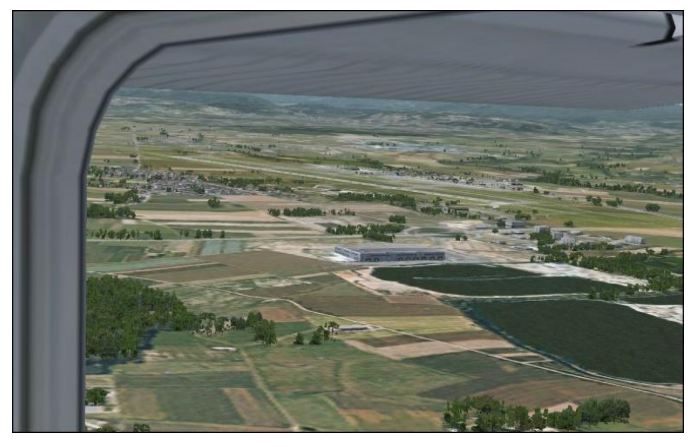
At this point, the next important step is to begin your descent on a 3° descent angle.
Keep runway in sight as to estimate when to turn into final.
¶ Final leg
When you estimate you are ready to intercept runway centreline,make a left turn as to establish on final.
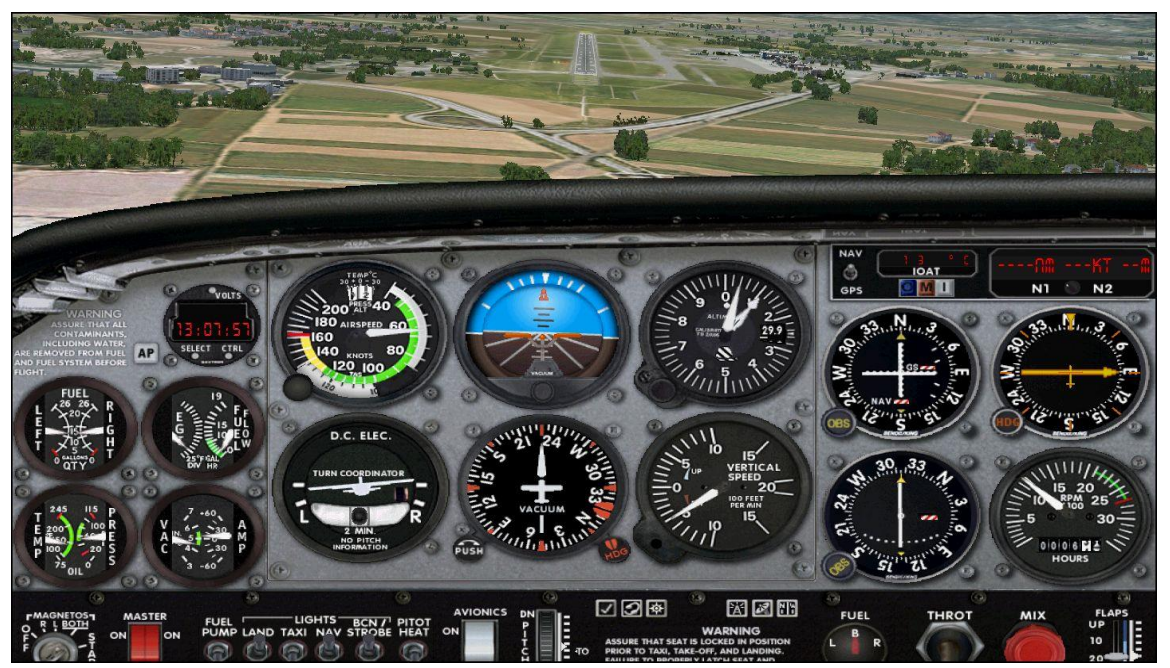
At this point, you should be at around 500 feet AGL.
Continue your descent accordingly. Use PAPI if available.
Remember to prepare your aircraft for landing.
- None
- None
- VID 150259 - Creation
- VID 200696 - Wiki integration